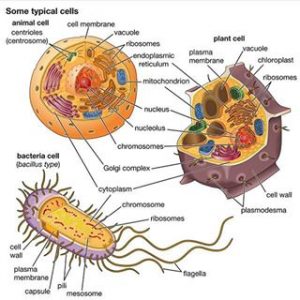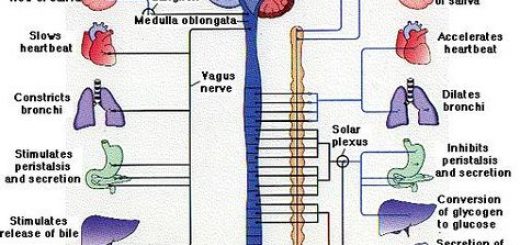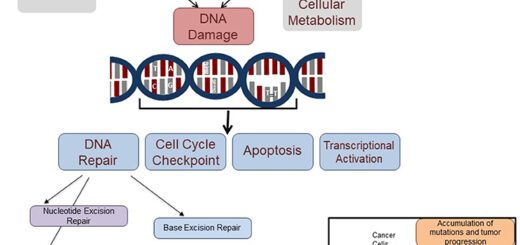Parts of cell & How can the cell perform its functions?
The cell is the smallest functional and building unit in all living organisms , The cell is characterized by the ability to grow , It can reproduce , It can respond to the external stimuli and perform the different metabolic processes .
The cell
The cell is made up of a protoplasmic mass surrounded by the cell membrane , The protoplasm is differentiated into parts which are nucleus and cytoplasm , Cytoplasm contains a group of cellular structures called cell organelles .
Cell structure
- The cell wall and cell membrane ( plasma membrane ) .
- The nucleus consists of nuclear envelope , Nucleolus , Nucleoplasm and Chromatin .
- Cytoplasm contains membranous organelles and non-membranous organelles , membranous organelles ( contains Endoplasmic reticulum , Golgi body , Lysosomes , Mitochondria , Vacuoles and Plastids ) , non-membranous organelles ( includes Ribosomes and Centrosome ) .
Cell wall
The cell wall surrounds the plant cell, algae, fungi and some types of bacteria, It is mainly composed of cellulose fibres, It supports and protects the cell, It allows the passage of water and dissolved substances through it easily because it is pitted.
The perennial trees such as palm trees are characterized by containing cell wall that play an important role in protecting the cells , making them withstand to wind and other weather factors , these walls provide the cells with strong support .
The small herbal plants are characterized by containing cell walls with little elasticity that makes them able to maintain their shapes as they are exposed to strong wind.
Cell membrane ( plasma membrane )
It surrounds the cytoplasm of plant and animal cells , Cell membrane is a fluid structure similar to a layer of oil because the phospholipids forming it are a fluid substance , It is a thin membrane consisting of :
- Two layers of the fluid phospholipid molecules , each of them consisting of Hydrophilic heads and Hydrophobic tails , Hydrophilic heads ( soluble easily in water ) meet the water medium in and out the cell , Hydrophobic tails ( insoluble in water ) and present inside the membrane .
- Molecules of protein are embedded between the molecules of phospholipids , where some of them work as cell identification sites for different substances such as nutrients , hormones and others , Some others work as gates to pass the substances into and from the cell .
- Cholesterol molecules linked with phospholipid molecules for maintaining the cell membrane cohesive and intact.
Cell membrane functions: It covers the cell and separates its components from the surrounding medium , So , it prevents the spreading out of cytoplasm outside the cell, It performs a basic role in organizing the passage of the substance to and from the cell .
Nucleus
Nucleus is the most obvious organelle in the cell that can be seen under the microscope , It has a spherical or oval shape and it is located at the middle of the cell .
The nucleus is composed of :
- Nuclear envelope is a double membrane separates the contents of the nucleus from cytoplasm , There are several tiny pores in it through which substances pass between the nucleus and cytoplasm .
- Nucleolus is responsible for synthesis of ribosomes which play an important role in protein synthesis , So , more than one nucleolus may be found in the nucleus especially in the cells forming and secreting proteins as enzymes and hormones .
- Nucleoplasm is a transparent gelatinous fluid contains the chromatin .
- Chromatin is minute tangled filaments coiled around themselves , during cell division and it changes into rod-like structures called chromosomes .
The chromosome
Chromosomes were called with this name because they stain by basic dyes , So, they appear coloured making them more clearly seen during cell division, During metaphase of cell division , The chromosome appears consisting of two filaments , each filament of those is called chromatid , They are joined together by a central part called centromere .
Each chromatid is composed of the nucleic acid DNA coiled around protein molecules called histones, DNA carries the genetic information ( genes ) that control the shape and structure of the cell and organize its vital activities , Genetic traits are transferred through them from a generation to another by reproduction .
Chromosome form the chromatin reticulum in cell nucleus , Chromosome is not consisted of two chromatids in all phases of mitosis where chromosome is consisted of two chromatids at the beginning of mitosis till its metaphase.
Chromosome becomes consisting of one chromatid in anaphase , telophase and called daughter chromosome , At the beginning of each new cellular division , its genetic material is duplicated to become consisted of two chromatids .
The cytoplasm
You can read this article about the cytoplasm
Non-membranous organelles and membranous organelles in the cytoplasm
Histology, Molecular structure of the cell membrane, Cell function & structure
Vesicular transport of Macromolecules across the cell membrane, Endocytosis & Exocytosis
Types of Transport through cell membranes, Active transport, Simple & Facilitated diffusion
Cell Structure, the function of Golgi apparatus, Endosomes & Lysosomes














